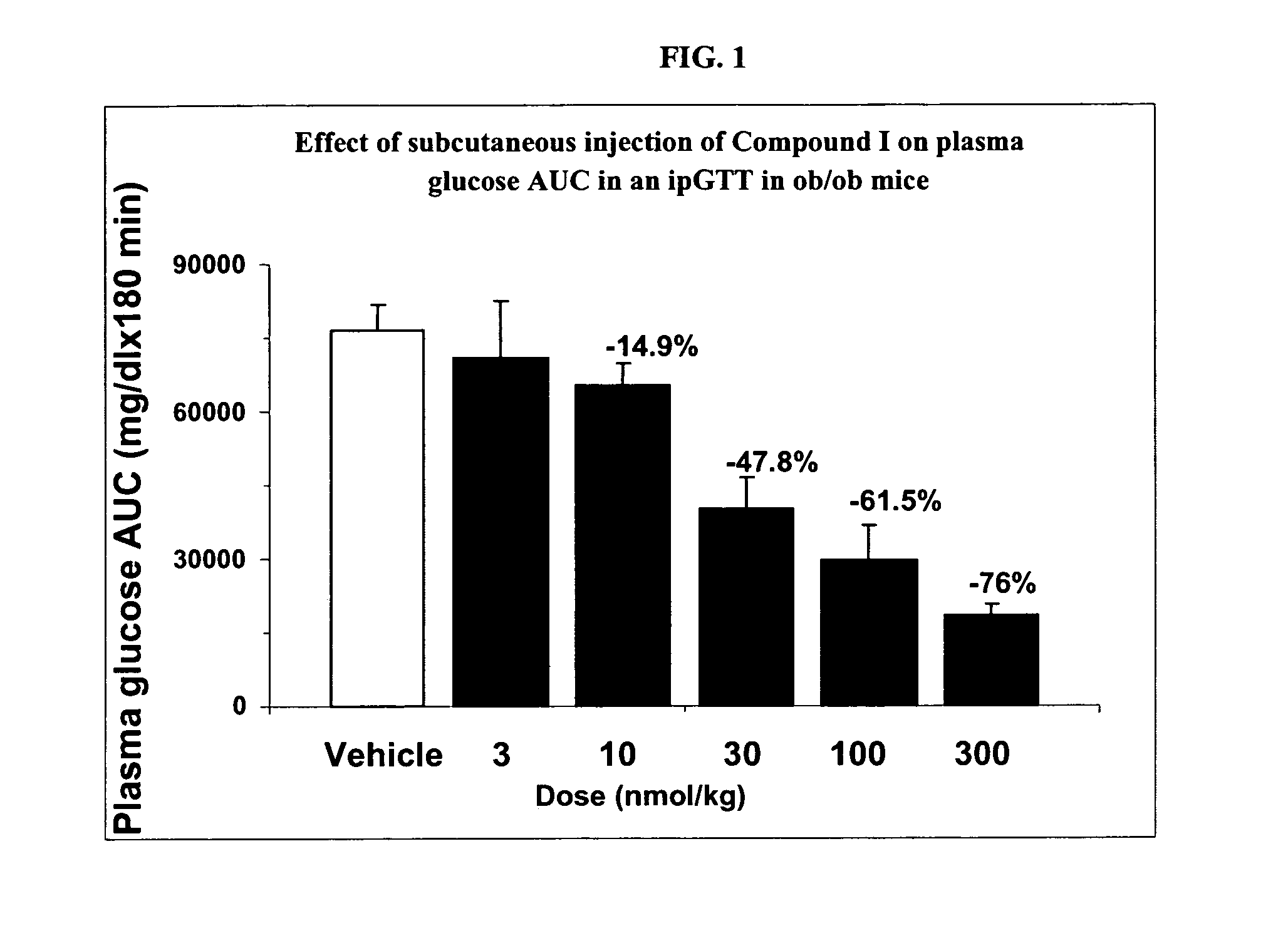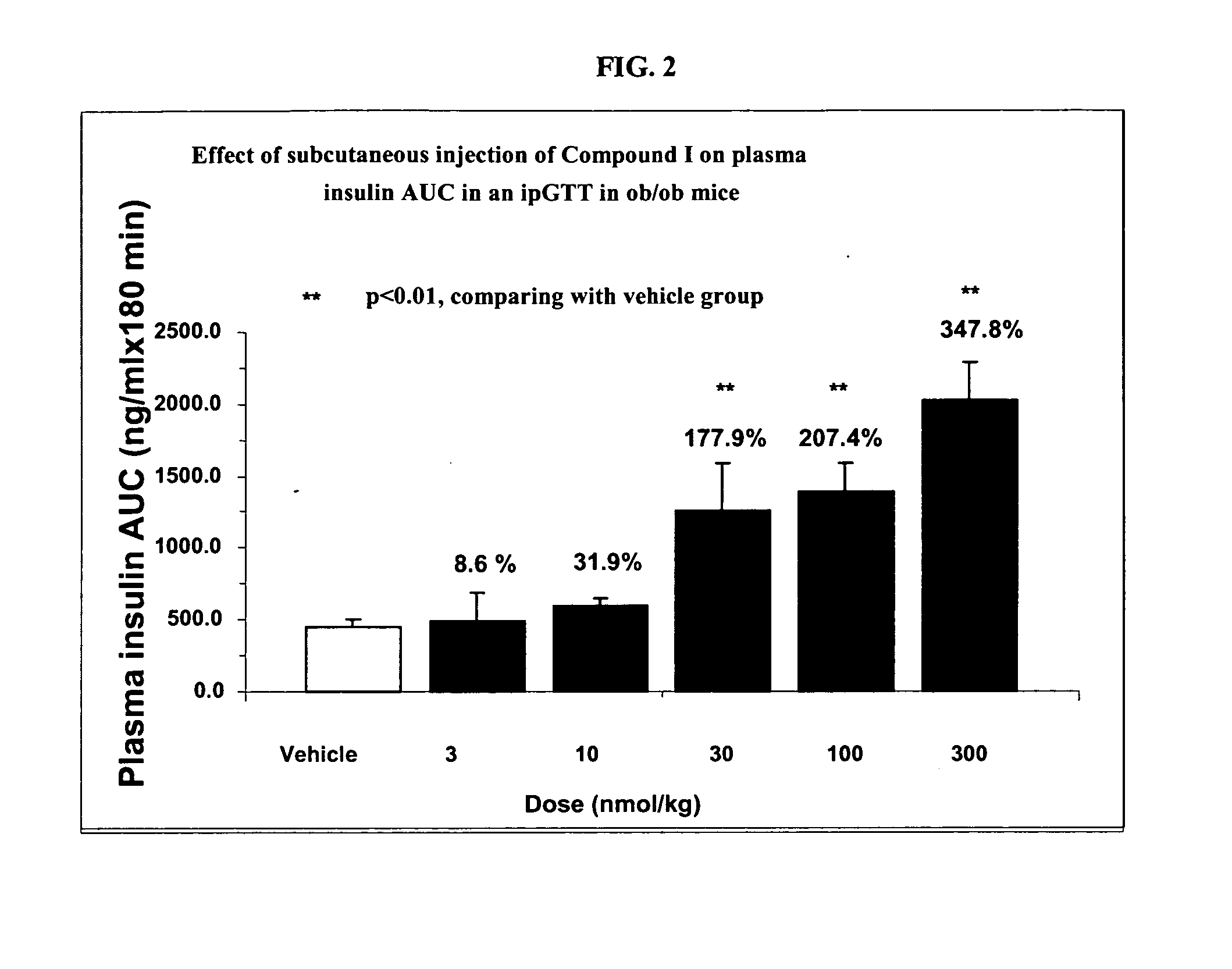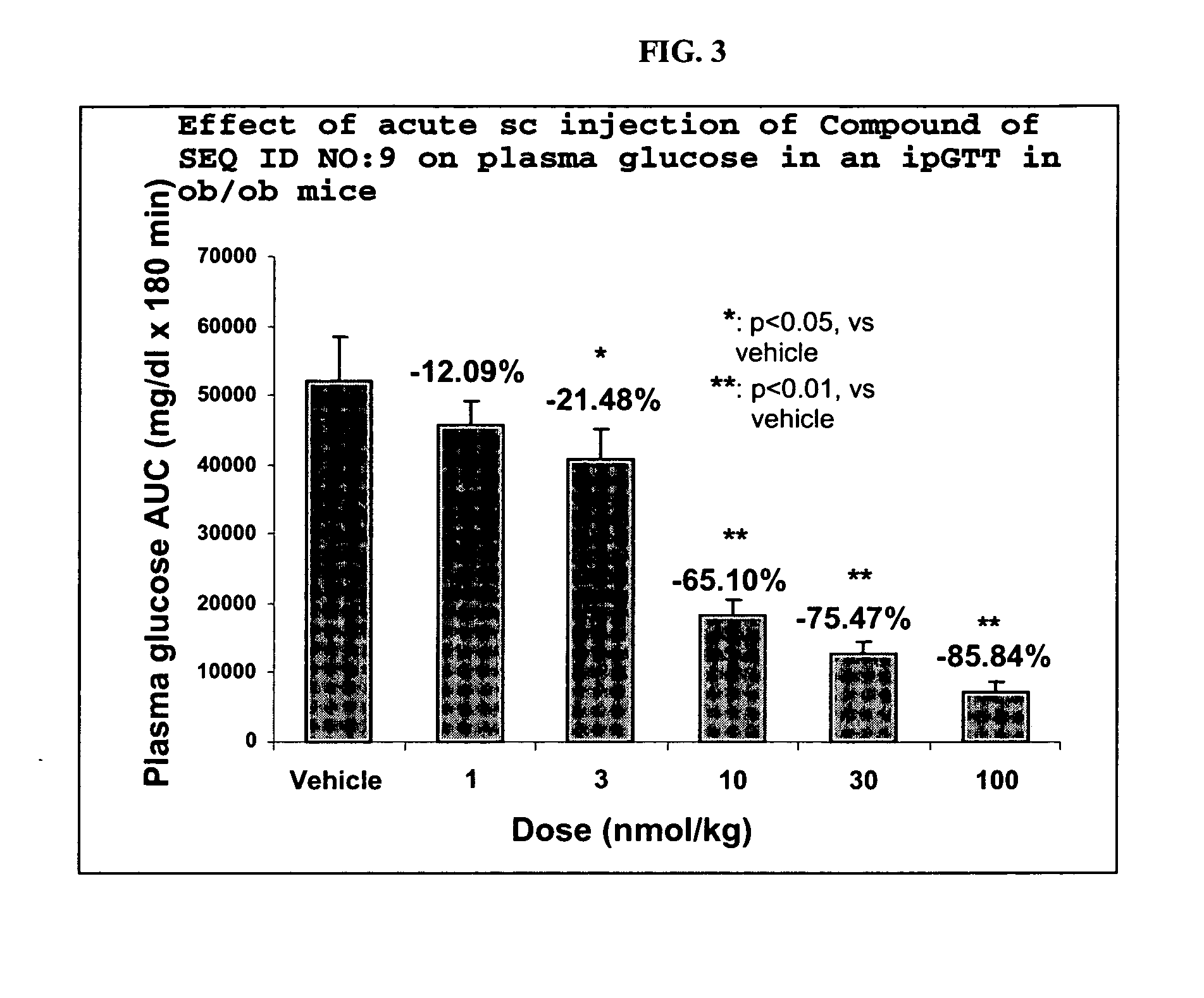N-terminally modified GLP-1 receptor modulators
a technology of glp-1 and receptor, which is applied in the field of human glucagonlike peptide1 (glp1) peptide receptor modulators, can solve the problems of short serum half-life of such peptides and significant problems in the treatment of glp-1-type molecules
- Summary
- Abstract
- Description
- Claims
- Application Information
AI Technical Summary
Benefits of technology
Problems solved by technology
Method used
Image
Examples
example 1
Simultaneous Solid Phase Peptide Synthesis of 11-mer Peptides
[0241] Dipeptidyl resin, containing, amino acid at positions Xaa10 and Xaa11, was prepared using the following manual procedure in a batchwise mode before continuing peptide chain elongation utilizing the automated simultaneous synthesis protocol on an MPS-396 peptide synthesizer. The synthesis of the N-α-Fmoc-protected biphenylalanine or phenyl-heteroaryl-alanine derivatives used in the manual couplings is described in the general experimental above, and in Examples 10-19.
[0242] An amount of 9-Fmoc-aminoxanthen-3-yloxy-Merrifield resin (Sieber amide resin; loading: 0.5 to 0.7 mmol / g) sufficient to synthesize several 11-mer analogs, was swelled by washing with DMF (4×10 mL / g, 5 minutes). The Fmoc group was then removed using two treatments, 5 and 15 minutes each respectively, with 20% piperidine in DMF (10 mL / g). The resin was washed with DMF (4×10 mL / g) and NMP (4×10 mL / g). A 0.5 M solution of Fmoc-L-4-(2′-Methylphenyl)...
example 2
[0259] A. General Procedure for the Synthesis of N-acylated 11-mer Peptide Analogs (Scheme 2)
[0260] The synthesis of N-acylated 11-mer peptide analogs was started from the protected 11-mer peptidyl-resin intermediate (1) (0.015 mmol), prepared as described herein, as shown in Scheme 2. The Fmoc group was removed using the procedure described herein, and the resulting resin intermediate 2 was coupled with the relevant Fmoc-protected amino acid or carboxylic acid using the coupling protocol described in the general method described herein. In cases where the appropriate anhydride was available, the N-acylation was performed using 5 eq. of the anhydride in NMP. The resulting N-acylated 11-mer analogs (3) were cleaved / deprotected and purified by prep. HPLC by the general method described herein.
B. General Procedure for the Synthesis of N-carbamate Derivatives of 11-mer Peptide Analogs
[0261] The synthesis of N-carbamate derivatives of 11-mer peptide analogs may be started from the p...
example 3
Solid Phase Synthesis of 11-mer Peptide Analogs Using an Applied Biosystems Model 433A Peptide Synthesizer
[0265] Following is the general description for the solid phase synthesis of typical 11-mer peptide analogs, using an upgraded Applied Biosystems Model 433A peptide synthesizer. The upgraded hardware and software of the synthesizer enabled conductivity monitoring of the Fmoc deprotection step with feedback control of coupling. The protocols allowed a range of synthesis scale from 0.05 to 1.0 mmol.
[0266] The incorporation of the two non-natural C-terminal amino acid was described above in connection with simultaneous synthesis of 11-mer analogs. Such a Fmoc-protected dipeptidyl resin was used in this ABI synthesis. The Fmoc-protected dipeptidyl-resin (0.1 mmol) was placed into a vessel of appropriate size on the instrument, washed 6 times with NMP and deprotected using two treatments with 22% piperidine / NMP (2 and 8 min. each). One or two additional monitored deprotection steps...
PUM
| Property | Measurement | Unit |
|---|---|---|
| stability | aaaaa | aaaaa |
Abstract
Description
Claims
Application Information
 Login to View More
Login to View More - R&D
- Intellectual Property
- Life Sciences
- Materials
- Tech Scout
- Unparalleled Data Quality
- Higher Quality Content
- 60% Fewer Hallucinations
Browse by: Latest US Patents, China's latest patents, Technical Efficacy Thesaurus, Application Domain, Technology Topic, Popular Technical Reports.
© 2025 PatSnap. All rights reserved.Legal|Privacy policy|Modern Slavery Act Transparency Statement|Sitemap|About US| Contact US: help@patsnap.com



